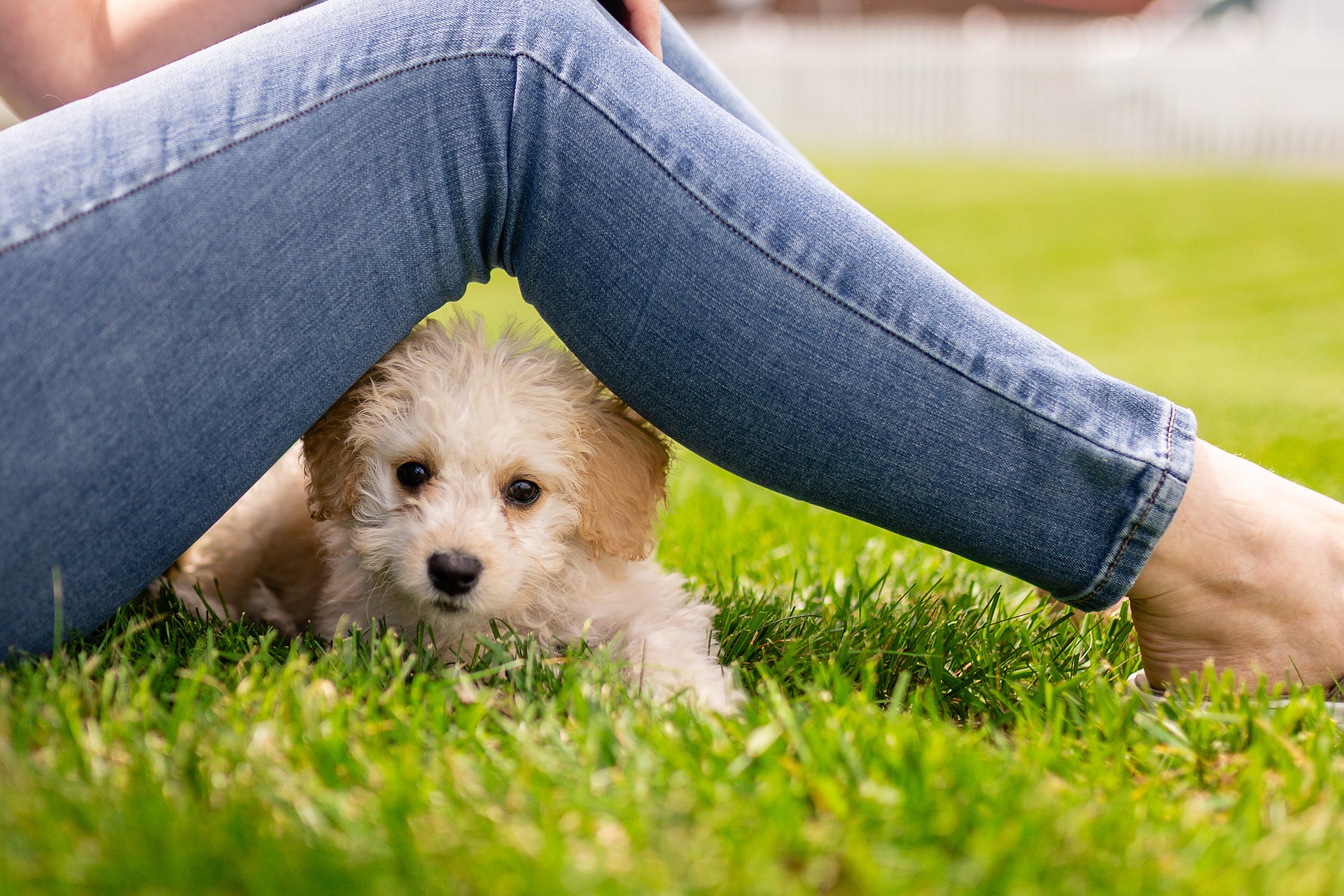Successful long-term companionship with a new dog is much easier if you start on the right foot. Bringing a dog into your home is a significant life change for both of you, but the pup is likely to be nervous and scared of this new strange world they are in. By reading their body language and gauging how they respond to your and your family, you can help ease the tension and welcome your new furry friend to their new home!
Preparing The House For A New Dog or Puppy
It’s impossible to predict precisely how your new dog will react when they arrive at the house, but that doesn’t mean you shouldn’t prepare. Puppies love to nibble, sniff, and chew on interesting objects, but this can include wires and other dangerous, pet-unfriendly materials. They may also make a mess of nice furniture and curtains. To combat this, you can purchase protective coverings for the things in your home that are most valuable/dangerous. Wires can also be taped down to the corners of the floor and wall if they can’t be protected or moved from your dog’s reach.
Importantly, we recommend cornering off a section or room in the house and restricting your dog to this area when not supervised. Doing this ensures that you only have to focus your preparation efforts intensely on one area of the home instead of every square inch. Until you are more comfortable trusting your dog not to destroy the furniture or get into a dangerous situation, don’t let them roam the house unsupervised.
Backyards should be inspected to make sure the fence can securely contain the pup. Loose railings, holes, or gaps in the fencing give your dog an avenue of escape, and they are unlikely to be comfortable enough to know how to return home.
Helping Your Dog Transition To A New Life
When your house is puppy-proofed to your liking, the next step is to bring the dog home. During this part of the adoption process, it is crucial not to rush it. The aforementioned area or room set aside for them can be their ‘safe space’ where they can return to sleep, eat, or get away from the hustle and bustle of the home. However, this doesn’t mean you should leave them alone. The first days and weeks of owning your pet are crucial bonding periods that can help shape your relationship going forward. Watch their reactions and body language to see how they are settling into the new family dynamic. If they seem troubled or concerned in large group settings, start bonding with them one on one or in smaller groups.
Establishing a routine can quickly turn a worried dog into one incorporated with the family. Providing structure to your dog’s daily schedule lets them become accustomed to feeding time, walks, and sleep time. This helps to eliminate any fears or doubts they might have regarding abandonment or uncertainty, possibly stemming from a previous owner or living situation.
When your concerns about your new puppy’s integration subside, it is time to start training. Training can help improve the bond between owner and pet, establish boundaries, and improve behavior. Training from a young age is preferred, but every dog, no matter the age, can learn if given sufficient praise, reward, and incentive.
Your pup can adjust well to its new life if you provide a safe, loving environment. They will be an integral part of the family in no time!
Call Gulf Coast K9 Dog Training today for more information regarding our training programs.





